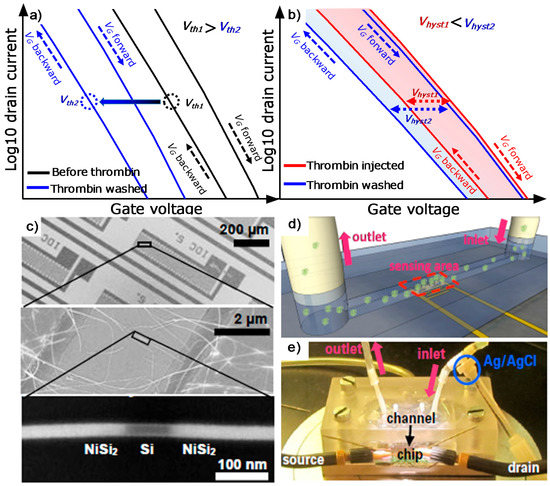We present a biosensor chip with integrated large area silicon nanowire-based field effect transistors (FET) for human alpha-thrombin detection and propose to implement the hysteresis width of the FET transfer curve as a reliable parameter to quantify the concentration of biomolecules in the solution. We further compare our results to conventional surface potential based measurements and demonstrate that both parameters distinctly respond at a different analyte concentration range. A combination of the two approaches would provide broader possibilities for detecting biomolecules that are present in a sample with highly variable concentrations, or distinct biomolecules that can be found at very different levels. Finally, we qualitatively discuss the physical and chemical origin of the hysteresis signal and associate it with the polarization of thrombin molecules upon binding to the receptor at the nanowire surface.

We present a biosensor chip with integrated large area silicon nanowire-based field effect transistors (FET) for human alpha-thrombin detection and propose to implement the hysteresis width of the FET transfer curve as a reliable parameter to quantify the concentration of biomolecules in the solution. We further compare our results to conventional surface potential based measurements and demonstrate that both parameters distinctly respond at a different analyte concentration range. A combination of the two approaches would provide broader possibilities for detecting biomolecules that are present in a sample with highly variable concentrations, or distinct biomolecules that can be found at very different levels. Finally, we qualitatively discuss the physical and chemical origin of the hysteresis signal and associate it with the polarization of thrombin molecules upon binding to the receptor at the nanowire surface.
